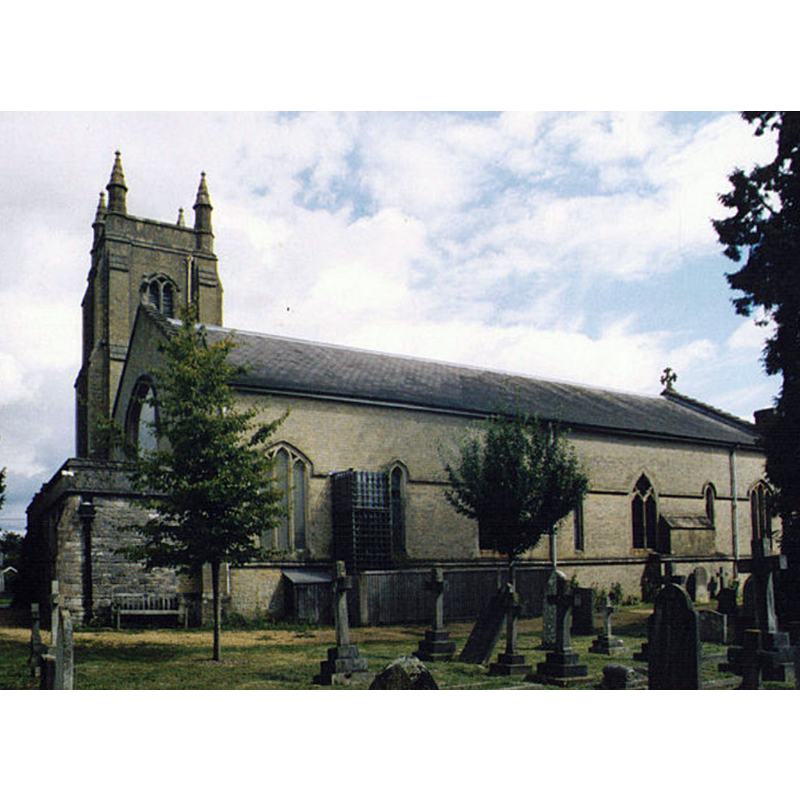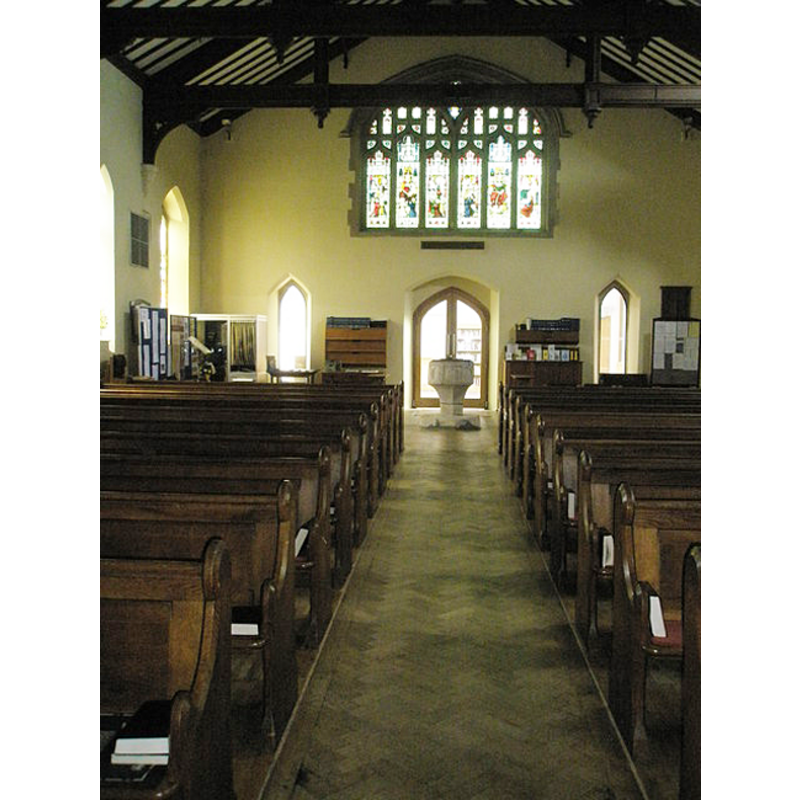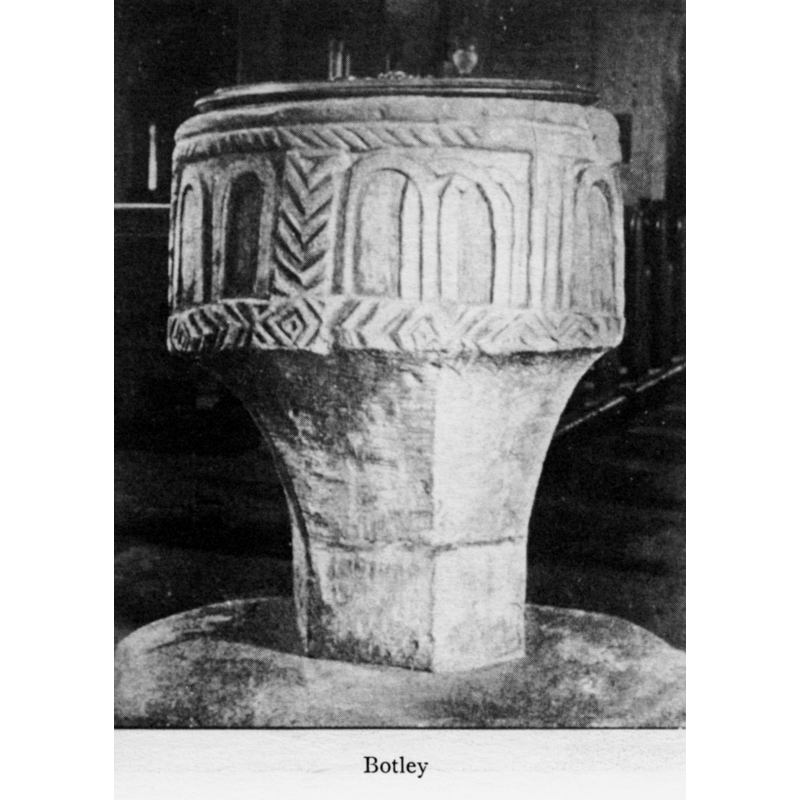Botley / Botelie / Boteleigh / Boteligh / Bottele

Image copyright © Basher Eyre, 2011
CC-BY-SA-2.0
Results: 9 records
design element - architectural - arcade - blind - round arches
Scene Description: all around the basin side, very crudely done, some of the arches intersected
Copyright Statement: Image copyright © Basher Eyre, 2011
Image Source: detail of a digital photograph taken 2 May 2011 by Basher Eyre [www.geograph.org.uk/photo/2389553] [accessed 31 August 2011]
Copyright Instructions: CC-BY-SA-2.0
design element - motifs - herringbone or chevron
design element - motifs - herringbone or chevron
design element - motifs - roll moulding
design element - motifs - rope moulding
view of church exterior - south view
Scene Description: Source caption: "All Saints, Botley. Grade 2 listed building erected in 1836."
Copyright Statement: Image copyright © Michael Ford, 2009
Image Source: digital photograph taken in 2004 by Michael Ford [www.geograph.org.uk/photo/1510531] [accessed 25 July 2018]
Copyright Instructions: CC-BY-SA-2.0
view of church interior - nave - looking west
view of font and cover
INFORMATION
FontID: 05142BOT
Object Type: Baptismal Font1
Church/Chapel: Parish Church of All Saints (the new church) [orig. from the old church]
Church Patron Saints: All Saints [the pre-Conquest church was dedicated to St. Bartholomew]
Church Location: High Street, Botley, Hampshire SO30 2EA, UK
Country Name: England
Location: Hampshire, South East
Directions to Site: Located off (NNE) the A334-B3354 crossroads, 10 km E of Southampton
Ecclesiastic Region: Diocese of Portsmouth [formerly Winchester]
Historical Region: Hundred of Mainsbridge -- Hundred of Mansbridge [in Domesday]
Font Location in Church: Inside the church
Century and Period: 12th century [re-cut?], Norman [altered?]
Cognate Fonts: [cf. FontNotes]
Font Notes:
Click to view
There is an entry for Botley [variant spelling] in the Domesday survey [http://opendomesday.org/place/SU5113/botley/] [accessed 24 July 2018]; it reports a church in it. The National Gazetteer of 1868 reports "a curious old font" in All Saints' Botley. White (1878) reports a remarkably fine font in this church. Listed in Cox & Harvey (1907) as a baptismal font of the Norman period. Described and illustrated in Bond (1908) as a baptismal font the crude [Bond actually uses the adjective "barbarous"] work of which tends to suggest an earlier dating than it should; Bond (ibid.) indicates that "the interlacing arcading is not likely to be earlier than that in the work of Priors Ernulph and Conrad of Canterbury (A.D. 1096-1130)"; rather, Bond continues, "it is safer to assume that the archaic look is due to the clumsiness of a twelfth century village mason, rather than it was the best that could be done in the eleventh century." Bond's illustration shows a cylindrical basin with a roll moulding at the rim and a rope moulding just below it; the bottom of the basin sides has herringbone motif and so do the vertical bands that connect top and bottom; in between, a crudely executed blind arcade of round arches; the prismatic underbowl and base are plain and very irregular, and the whole base looks as if it had been recarved from a tall cylinder by a very unskilled mason, probably at a time when chalice-shaped fonts on polygonal bases where more fashionable. The Victoria County History (Hampshire, vol. 3, 1908) notes: "The church of Botley, with the manor, belonged to Ralf de Mortimer at the time of the Domesday Survey [1086]. [...] Of the old church of All Saints only the chancel is now left standing. [...] The church now in use, in the main street of the village, was built in 1836 [...] The font, which is said to have been dug up on the river bank, is a roughly-shaped round bowl, its base cut back to a hexagonal shape at some later time. Its ornament is equally rough, and though doubtless of twelfth-century date, is probably not quite so early as it looks. A band of cable moulding runs round the top of the bowl, and a band of lozenge ornament lower down, the space between being divided into panels by vertical lines of lozenge or cable moulding, in which are round arched arcades—in one case of three interlacing arches, and in the others of two arches side by side." The site [freepages.genealogy.rootsweb.com/~villages/botley.htm] informs that the font "has been through unknown adventures, for it was found in the river" [NB: there is no reference as to when these 'adventures' took place but one should assume that they took place before Bond's time, i.e., prior to 1908. Buck (1951) mentions the 'cut away' feature of the Botley font in the context of his entry for the font at Great Durnford, Wilts. The Botley site [http://mti.botley.com/index.php?option=com_content&task=view&id=40&Itemid=58] notes: "It was apparently dug up near Fairthorne Manor in about 1740."
COORDINATES
Church Latitude & Longitude Decimal: 50.91425, -1.2737
Church Latitude & Longitude DMS: 50° 54′ 51.3″ N, 1° 16′ 25.32″ W
UTM: 30U 621353 5641708
MEDIUM AND MEASUREMENTS
Material: stone
Number of Pieces: one
Font Shape: cylindrical (mounted)
Basin Interior Shape: round
Basin Exterior Shape: round
Drainage Notes: lead-lined
LID INFORMATION
Date: modern
Material: wood, oak?
Apparatus: no
Notes: flat and round, with metal decoration and ring handle; probably Victorian
REFERENCES
The National Gazetteer: a Topographical Dictionary of the British Isles, London: Virtue & Co., 1868
Victoria County History [online], University of London, 1993-. Accessed: 2011-08-31 00:00:00. URL: https://www.british-history.ac.uk.
Bond, Francis, Fonts and Font Covers, London: Waterstone, 1985 c1908
Buck, A.G. Randle, "Some Wiltshire fonts. Part II", LIV, CXCIV (June 1951), The Wiltshire Archaeological and Natural History Magazine, 1951, pp. 19-35; p. 20
Cox, John Charles, English Church Furniture, New York: E.P. Dutton & Co., 1907
White, William, History, gazetteer and directory of the County of Hampshire including the Isle of Wight, and [...], Sheffield: William White, 1878



